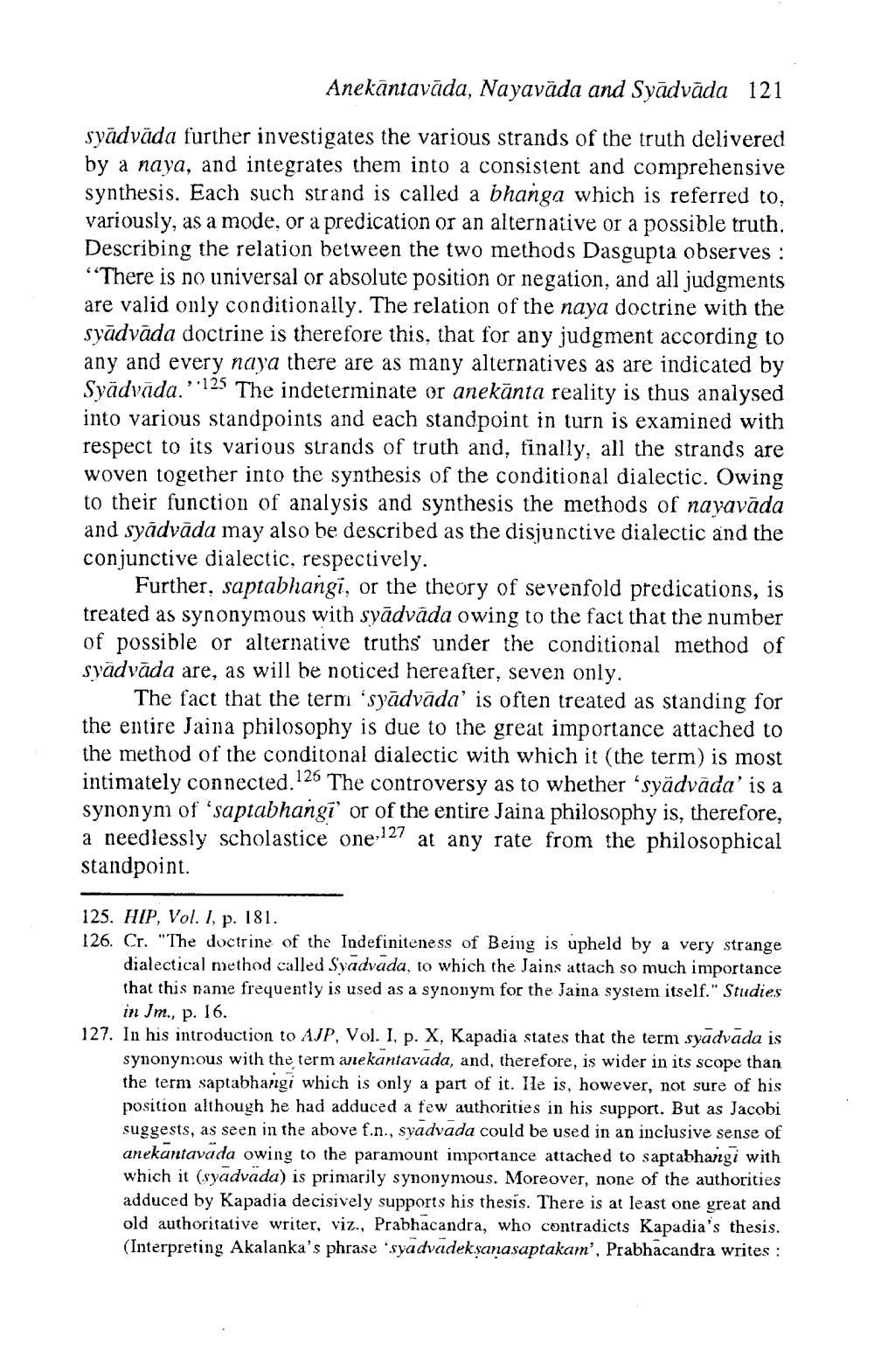________________
Anekantavāda, Nayavāda and Syādvāda 121
syadvada further investigates the various strands of the truth delivered by a naya, and integrates them into a consistent and comprehensive synthesis. Each such strand is called a bhanga which is referred to, variously, as a mode, or a predication or an alternative or a possible truth. Describing the relation between the two methods Dasgupta observes : "There is no universal or absolute position or negation, and all judgments are valid only conditionally. The relation of the naya doctrine with the syādvāda doctrine is therefore this, that for any judgment according to any and every naya there are as many alternatives as are indicated by Syādvāda.'•125 The indeterminate or anekānta reality is thus analysed into various standpoints and each standpoint in turn is examined with respect to its various strands of truth and, finally, all the strands are
en together into the synthesis of the conditional dialectic. Owing to their function of analysis and synthesis the methods of nayavi and syādvāda may also be described as the disjunctive dialectic and the conjunctive dialectic, respectively.
Further, saptabhangi, or the theory of sevenfold predications, is treated as synonymous with syādvāda owing to the fact that the number of possible or alternative truths under the conditional method of syadvāda are, as will be noticed hereafter, seven only.
The fact that the term 'syadvāda' is often treated as standing for the entire Jaina philosophy is due to the great importance attached to the method of the conditonal dialectic with which it (the term) is most intimately connected. 126 The controversy as to whether ‘syādvada' is a synonym of 'saptabhangi' or of the entire Jaina philosophy is, therefore, a needlessly scholastice one,127 at any rate from the philosophical standpoint.
125. HIP, Vol. I, p. 181. 126. Cr. "The doctrine of the Indefiniteness of Being is upheld by a very strange
dialectical method called Syadvada, to which the Jains attach so much importance that this name frequently is used as a synonym for the Jaina system itself." Studies
in Im., p. 16. 127. In his introduction to AJP, Vol. I, p. X, Kapadia states that the term syadvāda is
synonymous with the term anekantavada, and, therefore, is wider in its scope than the term saptabhangi which is only a part of it. Ile is, however, not sure of his position although he had adduced a few authorities in his support. But as Jacobi suggests, as seen in the above f.n., syadvada could be used in an inclusive sense of anekantavada owing to the paramount importance attached to saptabhangi with which it (syadvada) is primarily synonymous. Moreover, none of the authorities adduced by Kapadia decisively supports his thesis. There is at least one great and old authoritative writer, viz., Prabhacandra, who contradicts Kapadia's thesis. (Interpreting Akalanka's phrase 'syadvadeksanasaptakam', Prabhacandra writes :




